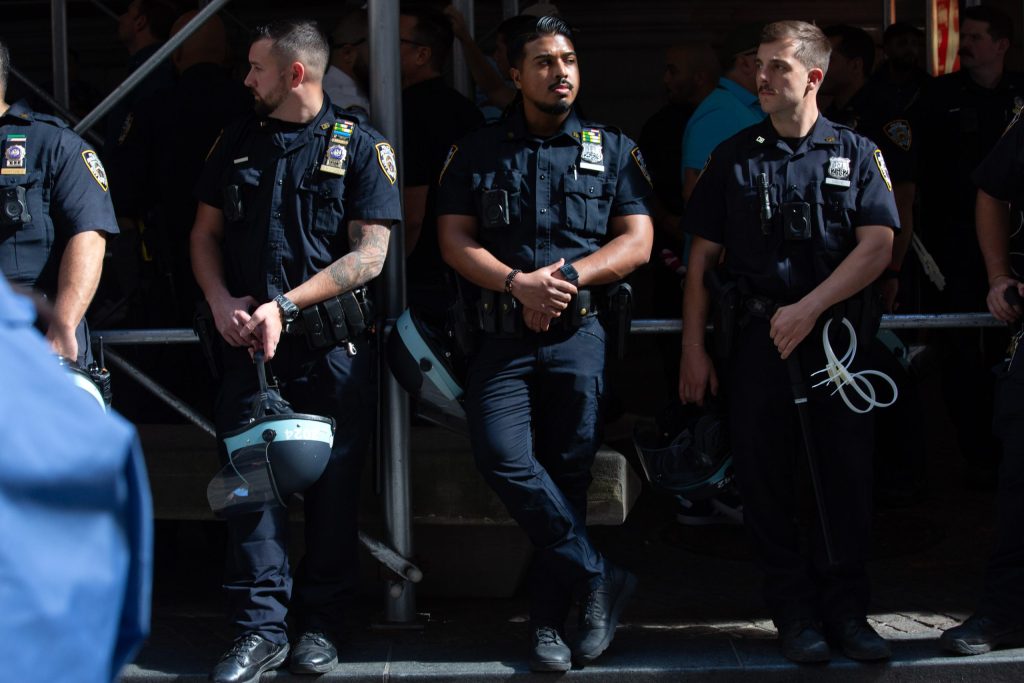This ballot question guide is part of our full explainer article on all of the six proposals on the ballot in New York City this November.
What is Ballot Question 4?
Ballot Question 4 would mandate that City Council take longer to hear public input before voting on laws relating to the Police, Corrections, or Fire Departments.
Question 4 as it will appear on your ballot: “This proposal would require additional public notice and time before the City Council votes on laws respecting the public safety operations of the Police, Correction, or Fire Departments.”
This one is pretty straightforward. If the City Council wants to vote on a law that has to do with public safety — specifically concerning the NYPD, the city Department of Correction or FDNY — they have to notify the public, the mayor and all of the affected agencies at least 30 days before the vote.
In those 30 days, the mayor and or the agencies could hold their own hearings to solicit public input. The Charter Review Commission argues that since public safety is of “central importance” to the city, it requires a different public input process than other legislation. Union and agency representatives from the police, correction and fire departments agree.
Citizens Union, a good government group, disagrees, testifying at one of the public hearings that “public safety legislation receives similar public input opportunities as other laws on
other issues.”
City and State reported that opponents felt that the Adams administration was pushing this proposal in direct response to two specific laws passed by City Council earlier this year: one that requires the NYPD to report on lower-level encounters with residents and another which bans solitary confinement. Adams vetoed both those laws, and the City Council then overrode him.
Where did this proposal come from?
Ballot questions 2 through 6 on New York City voters’ ballots this year went through a rocky process to make it your voting booth.
In the spring, the City Council put forth a ballot measure to expand the “advice and consent” process that gives the Council the power to approve some mayoral appointees.
Around the same time, Mayor Eric Adams created his own Charter Review Commission, assembling some of his closest allies to lead the process, as THE CITY has reported. His commission met for two months this summer, a timeline that has been criticized by City Council and advocacy groups as rushed.
The dueling ballot proposals caused a legal clash. According to city law, the City Council’s ballot proposals and the mayor’s can’t coexist on the same ballot, and the mayor’s takes precedence. That means only Mayor Adams’ proposed Charter revisions will appear this November.
The executive director of the mayor’s commission, Diane Savino, says that its five ballot measures were the result of listening to New Yorkers’ needs, taking input from thousands of people and that they reflect “the desires they heard from New Yorkers for clean streets, fiscal responsibility, public safety, transparency in the city’s capital planning process and support for Minority- and Women-Owned Business Enterprises,” she said in a statement.
Opponents to the mayor’s charter revisions disagree and say that though these ballot questions seem innocuous, they are actually an attempt to interfere in the city’s legislative process.
“[Propositions] two through six weaken checks and balances and weaken local democracy and increase power for the mayor at a time when people all over the country should be voting for democracy up and down the ballot,” said Joo-Hyun Kang, a representative for No Power Grab NYC, a campaign that was formed in response to the proposed Charter revisions.
“It’s a sophisticated and sneaky move by the mayor,” Kang said.
Have a question about the ballot proposals, or about voting in New York this year? Reach out to our newsroom at ask@thecity.nyc.

